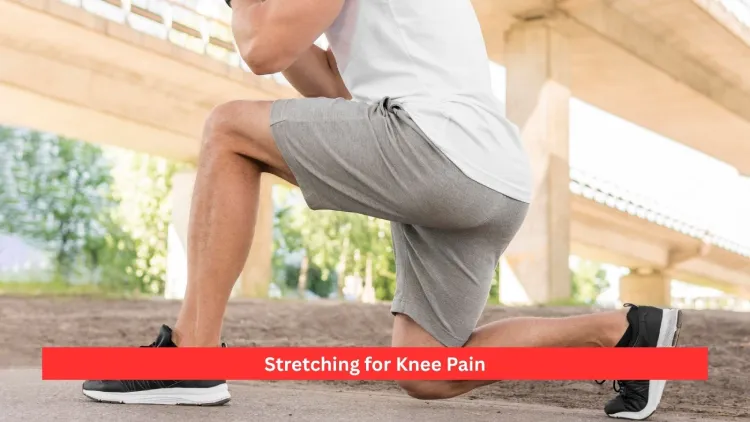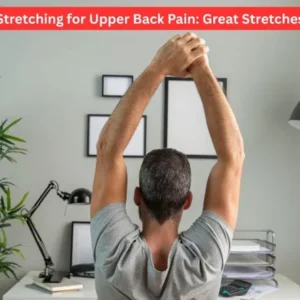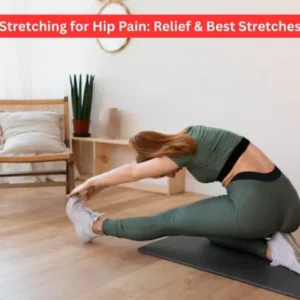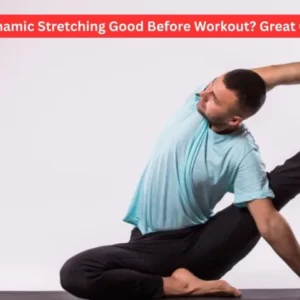Knee pain may interfere with walking, exercising, sitting, or even sleeping, thus making it one of the most interfering joint problems individuals encounter. As knee pain can have a variety of causes, including ageing, overuse, sports injury, bad posture and chronic health conditions such as arthritis, it restricts your body mobility and impacts your daily life. Luckily, stretching for knee pain is one of the best home remedies, and it is one of the most natural and easy-to-reach solutions.
Simple stretching is used to work on the surrounding muscles and tendons around the knee, including the quadriceps, hamstrings, calves and the IT band (which tends to stiffen up and be the cause of pain). By regularly applying specific stretches, one can not only relieve and mitigate pain and stiffness but also make his or her joints more flexible, boost circulation, and enhance the maintenance of mobility.
We will examine in this article why stretching can be so effective against knee pain and see some of the reasons why people experience pain in the knees, as well as being able to take you with the best stretches you can attempt to do at home. Safety tips, which are essential in preventing injuries, and also what to do in case the help of a medical professional is needed, are also going to be learned.
Whether the soreness of the knee or the pain is occasional or chronic, having a stretching regimen for knee pain in your practice might be the solution to a long-term remedy and better living. Some of its stretches are related to stretching for hip pain.
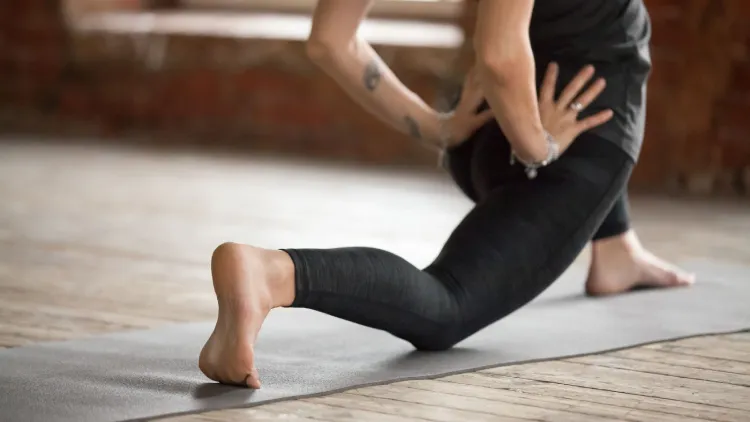
Why Stretching Helps with Knee Pain
The knee joint is a complex hinge joint and is a connection between the thigh bone (femur) and shinbone (tibia). It is stabilised and is supported by muscles, ligaments, tendons and cartilage. Whenever any of these soft tissues stiffen, weaken, or swell up, what ensues is usually pain or discomfort around the knee region.
Stretching for knee pain works even more so as it:
- Unclenches tense muscles: Tightness of quads, hamstrings, calves and IT band may tug on and add pressure to the knee.
- Improves circulation: Gentle stretches increase the circulation; oxygen and nutrients are delivered to the tissues that should be healed.
- Increases flexibility: Increased flexibility alleviates the pressure on the knee when one is walking, bending or climbing stairs daily.
- Decreases stiffness: Stretching will be particularly beneficial to individuals with arthritis by making their joints lubricated and decreasing morning stiffness.
- Assists in preventing injuries: Stretching can prevent injury by correcting muscle imbalances that frequently cause knee injuries and chronic pain.
Stretching as a means of balancing knee pain can have an immediate and a long-term effect by included in an everyday plan.
Common Causes of Knee Pain
Answering the question of what is acting as the milieu behind your knee pain is critical to delve into flexibility training to counter the condition. Stretching will not be the universal solution to all the problems, but it sometimes works well along with other means of treatment when it is applied appropriately. The most common stretches for knee pain are as below:
1. Arthritis (Osteoarthritis and rheumatoid arthritis)
Arthritis causes the joint to become inflamed, and hence becomes stiff and painful. Frequent stretches loosen the muscles and may result in a better range of motion.
2. Runner’s knees
It is a condition that brings about pain on the kneecap and is mainly caused by the instability of this area or muscle imbalances. Tracking problems can be corrected by stretching the muscles around the area.
3. Syndrome Of the IT Band
The iliotibial band is located on the outer side of your thigh and may get tight, which irritates the knee joint. This area can be stretched to reduce pain a lot.
4. Tendonitis
Aching and swelling are a result of inflammation of the tendons and usually the result of overuse. Stretching helps in means of depressing the tension in damaged tendons.
5. Ligament Injuries
ACL or MCL injury needs to be treated medically; however, during the recovery phases, light stretching should be done (under supervision) to restore mobility.
When you have a serious injury or condition, make it a practice to consult with a healthcare provider before initiating a stretching program.
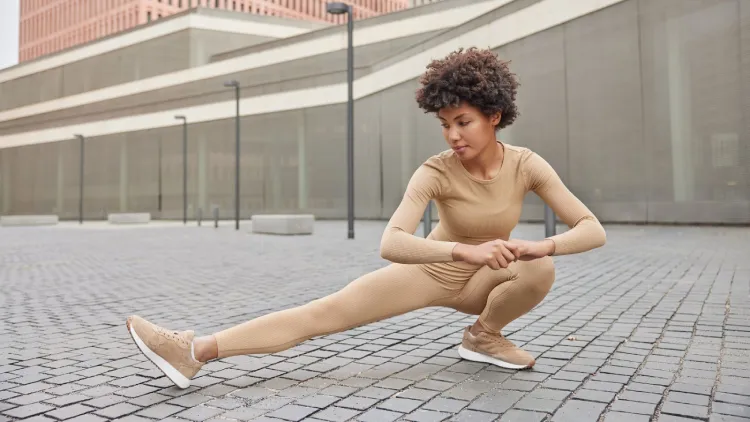
Best Stretches for Knee Pain Relief
These combinations of stretches will help to relieve tightness and discomfort if you already experience it. All you need is a nice mat or a towel and several minutes each day.
1. Quadriceps Stretch
Target area: Front thigh
How to do:
- Sit up and use a chair or a wall to support.
- Fold your knee and bring the heel to your buttocks.
- Put your hand on your ankle and hold it towards you with your knees facing side by side.
- Keep the stretch in position between 20 and 30 seconds. Then do it on the other leg.
It is a stretch that relieves the front thigh, and the muscles in this area tend to tug on the kneecap, causing pain.
2. Hamstring Stretch
Target area: Back of the thigh
The way:
- Sit upon a floor on one leg, stretched straight.
- Bend the other leg and place the sole on your adjoining thigh.
- Lean so as to touch your other foot (straight back position).
- Keep on hold (20-30 sec) and repeat on the opposite side.
This is because tight hamstrings may tug at the knee and restrict the motion. The stretch helps to increase flexibility and minimise strain.
3. Calf Stretch
Target area: Lower leg and knee
How to:
- Facing a wall, you should put your hands on it.
- Take one foot backwards and press the heel on the floor.
- Have straight back legs and lean forward a little.
- Keep for 30 seconds and alternate.
The calves are fastened towards the rear end of the knee; thus, pain can be a result of tightness. The frequent stretching decreases the load on the joint.
4. IT Band Stretch
Target area: Outer thigh and knee
How to Do it:
- Stand up, put the left leg behind the right one.
- Use a slow motion to lean your upper body to the right until you feel tension in the outer hip and the thigh.
- Grip 30secs and repeat on the alternative side.
Repetitive motion and other causes of poor posture can cause the IT band to become inflamed. By loosening this area, one helps relieve lateral knee pain.
5. Heel and Calf Stretch (Wall Stretch)
Target area: Achilles tendon and calf
Doing it:
- Put your hands on a wall.
- Move one foot back so that the heel is still on the ground and the back leg is straight.
- There is a bit of flexion on the front knee until you feel a strain on the calf of the back leg.
- Stay 30 seconds on each side.
The movement enhances the mobility of the lower leg and relieves the pressure on the knee joint when walking or exercising.
Tips for Safe Stretching
To have an optimal effect on stretching for knee pain, it is necessary to observe the following safety precautions:
- Warm up: Start off by doing some 5-10 minutes of light cardio, such as walking or biking, which warms up your body, ensuring that more blood goes to your muscles.
- Do not bounce: You should not bounce during stretching. Bouncing may tear small muscles, as well as aggravate your pain.
- Take props when necessary: A wall, a chair, or a yoga strap can help to balance and support the posture.
- Breathe slowly: Slow breathing of deep breaths helps the muscles relax better as they stretch.
- Be consistent: Set stretching as a daily routine- this could be as little as five minutes, but these minutes count in the long run.
- Pay attention to your body: A little amount of discomfort is common, but sharp pain is not. Adjust or omit any awkward stretch.
By adding the above tips to your stretching routine, you will be able to make your stretching safe, sustainable, and valuable.
When to See a Doctor
Although stretching for knee pain can be very useful when dealing with a mild to moderate condition, it is worth noting that you should consult a doctor in case your knee pain; you experience some of the following symptoms:
- Unrelenting or increasing pain
- Redness, warmth or swelling at the joint area
- Unsteadiness or instability, tripping up or balance problems
- Clicking or locking of feeling knee
- A history of knee injury which has failed to heal itself
There is an underlying problem that can be diagnosed by a physician or a physical therapist, and that can be brought to a personalised rehab and stretching plan.
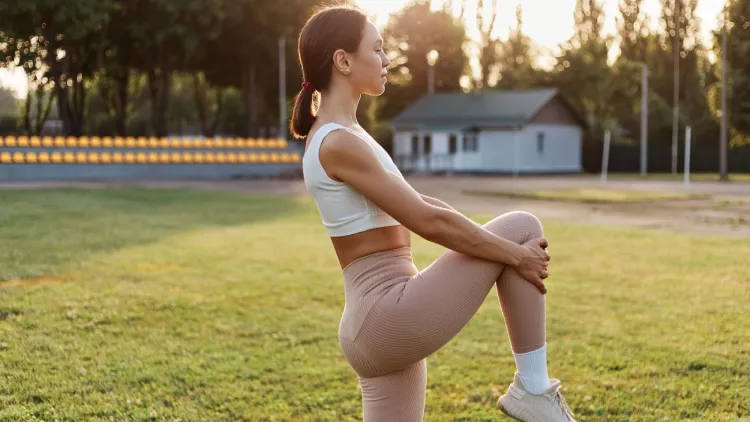
Final Thoughts
One of the easiest and most available measures to enhance the health of joints, become more flexible, and alleviate pain is stretching for knee pain. Consistently and correctly performed, stretching may favour superior functioning of the knees as well as keep you active and mobile over the years.
Whether it is a young adult with a sports injury or an elderly person who handles arthritis, almost every individual can appreciate a daily routine of stretching. As an addition to strength training, the right footwear, and healthy posture practice, stretching allows you to maintain your joint health at the right of your own, instead of the way on your own.
It can be during the beginning of your day, or the completion of your exercise or the reason you are taking a rest in your office, but take the time and give it a few minutes of stretching your knees as it will not only ease its pain but also be thankful to your knees.
Frequently Asked Questions
1. Which are the most effective stretches in cases of relieving knee pain?
The knee pain stretches are also among the best stretches, such as the quadriceps stretch, hamstring stretch, calf stretch, IT band stretch, or the heel and calf (wall) stretch. These aim at the essential muscles and tendons that cover and protect the knee, which allows for to elimination of the tightness of muscles, enhances flexibility, and eliminates discomfort.
2. Does stretching knee pain aid in arthritis?
Yes, stretching knee pain may be quite useful, especially to individuals who are victims of osteoarthritis or rheumatoid arthritis. Stretching, which is gentle, daily exercise, is useful to repair the stiffness of joints, as well as improve the flexibility and circulation of the joints, which helps in minimising the pain, and also enables mobility.
3. How many times do I stretch my knees when I have knee pain?
Ideally, to get an optimal effect, it is necessary to stretch every day or a minimum of 4-5 times a week. Regularity is essential in alleviating painful knee conditions by means of stretching. They only need to last 5-10 minutes, and stretching before or after exercise might be particularly beneficial.
4. At what point should I not stretch to relieve knee pain?
One should not stretch when there is a serious knee injury, intense pain on performing the stretch test, or when there is swelling, instability or locking of the knee. The consultation with a doctor or physical therapist is necessary in scenarios when a person wants to continue with or commence a stretching process.

